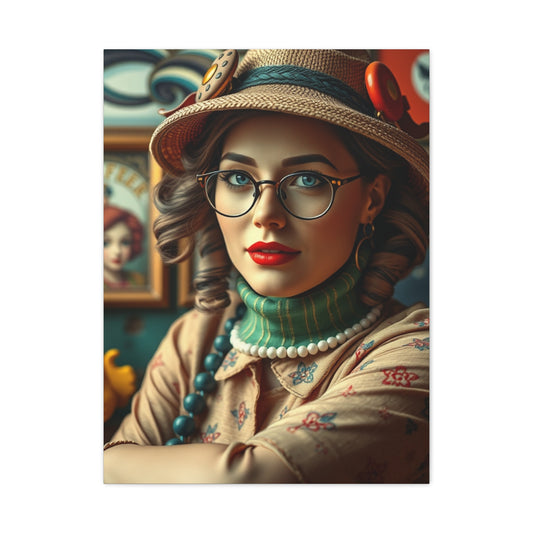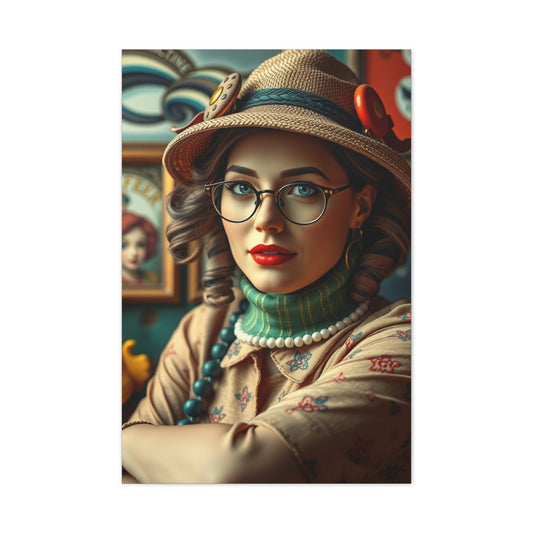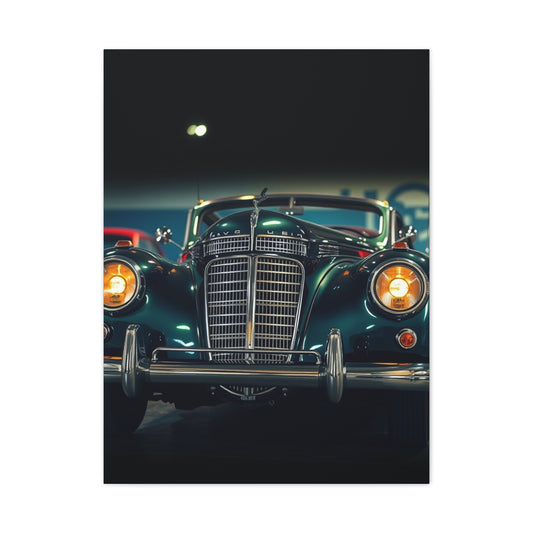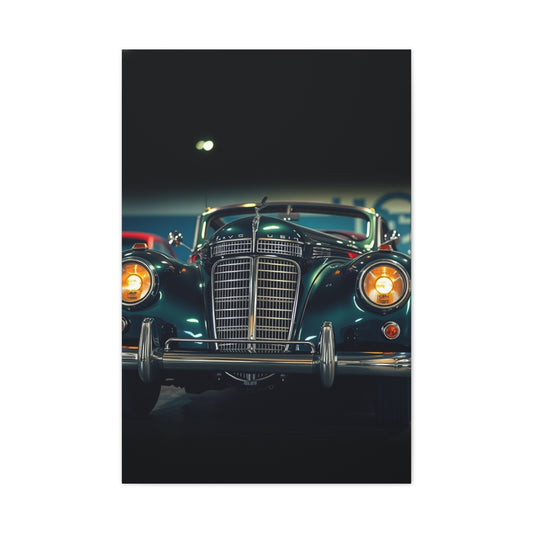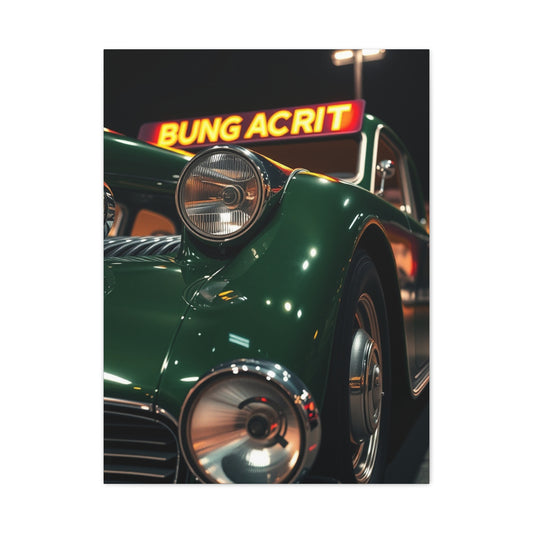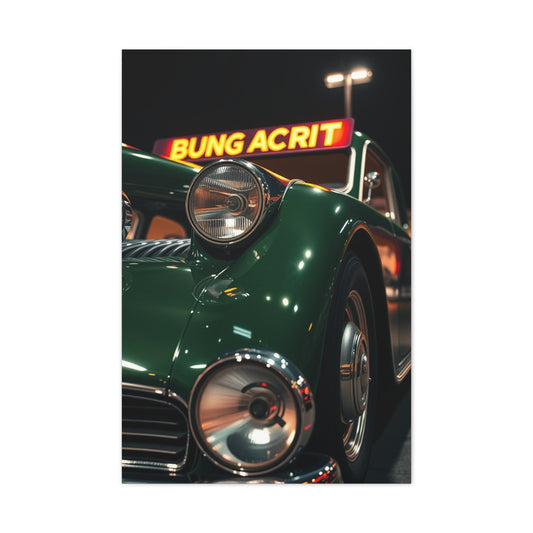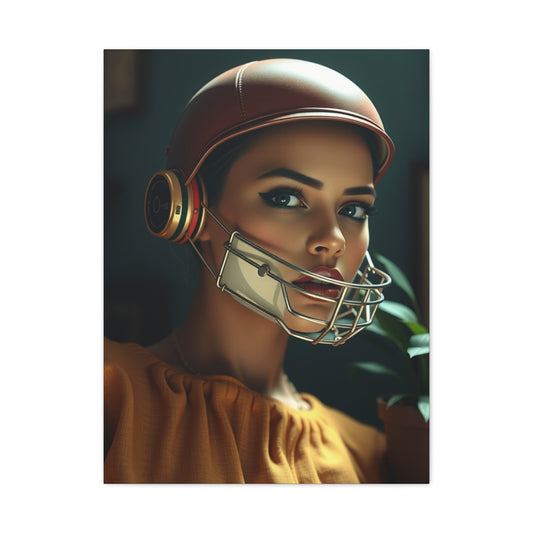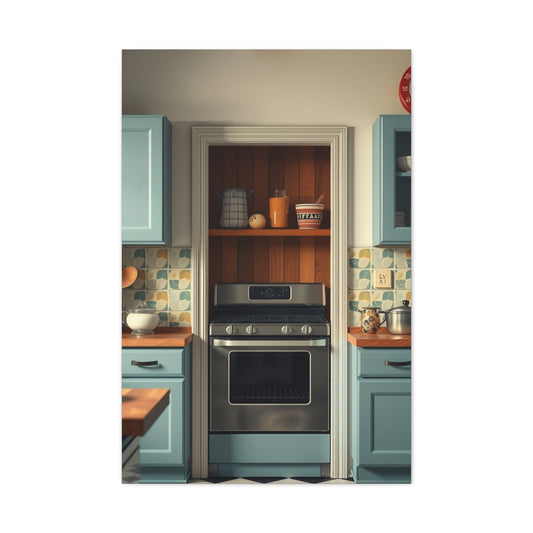Vintage-inspired design continues to redefine home décor in 2025, offering a graceful counterbalance to today’s fast-paced world. Whether you’re drawn to the ornate finesse of the Victorian period, the decorative clarity of Art Deco, or the simplicity of mid-century modern, vintage wall art can infuse any interior with character, depth, and story.
Wall art plays a transformative role in curating a home that feels personal, rich with cultural lineage, and effortlessly stylish. Even a single framed piece—evocative of eras past—can act as an anchor, setting the tone for the entire room. Vintage wall décor offers more than aesthetic appeal—it provides a narrative link between your living space and history’s creative legacy.
Reawakening Tradition: A Modern Revival of Classical Artwork
In 2025, the influence of vintage art has surged in both high-end design and casual interiors. Collectors and homeowners alike are rediscovering the emotive power of classic paintings and prints, integrating them into spaces that are otherwise contemporary in layout and materials. The warmth and intentionality of vintage wall art balance minimalism’s austerity, offering rooms a softer, more meaningful visual dialogue.
Among the many masters revisited this year, Vincent van Gogh continues to command attention. Beyond his iconic Starry Night, pieces like Irises, The Bedroom, and Almond Blossom are being celebrated for their organic vitality and luminous color palettes. These works lend themselves well to quiet corners, hallways, and transitional spaces, creating emotional touchpoints throughout the home.
Expanding the Gallery: Timeless Artists for Every Aesthetic
The enduring appeal of vintage wall art lies in its extraordinary range—spanning centuries, artistic movements, and aesthetic philosophies. While Vincent van Gogh remains an iconic figure whose emotionally charged brushwork and vivid palette continue to grace the walls of stylish modern homes, the vintage art world offers far more than a singular perspective. Today’s design-conscious homeowner is expanding their artistic repertoire to include a broad pantheon of masterful creators whose works transcend eras and trends.
|
Related Catagories: |
Renaissance-era works by Leonardo da Vinci, for instance, remain coveted for their profound balance, harmony, and anatomical precision. Pieces such as The Annunciation or Vitruvian Man reflect da Vinci’s insatiable curiosity and intellectual rigor—attributes that resonate with those seeking to cultivate thoughtful, introspective spaces. These prints are particularly powerful in home libraries, studies, or creative workspaces, where they evoke a sense of scholarly sophistication and time-honored beauty.
Moving into the drama and grandeur of the Baroque period, the works of Caravaggio, Rubens, and Rembrandt introduce visual narratives rich in movement, contrast, and emotional intensity. Caravaggio’s dramatic chiaroscuro and lifelike subjects draw viewers into a moment of story, making his works a bold statement in entryways or formal living rooms. Rembrandt’s introspective self-portraits, conversely, offer quiet gravitas, ideal for more intimate settings like a reading nook or bedroom gallery wall. These artists lend themselves especially well to classic interior design schemes, but when placed thoughtfully, can create striking contrast in contemporary or industrial settings.
For those with a penchant for cleaner lines and bolder palettes, early 20th-century modernists present an exciting alternative. Wassily Kandinsky, a pioneer of abstract art, explored the emotional resonance of form and color with a dynamic, free-spirited energy that harmonizes well with modern furnishings and minimal decor. His works, often defined by concentric circles, sinuous lines, and geometric abstraction, feel right at home in loft-style apartments, creative studios, or Scandinavian-inspired interiors. Likewise, Piet Mondrian’s reductive compositions—crafted through primary colors and black lines—offer a refined yet impactful aesthetic that complements structured design schemes.
Marc Chagall, whose whimsical dreamscapes blend folk art with surrealism, is another artist regaining recognition among collectors and designers in 2025. His ethereal use of color and symbolic imagery introduces a poetic softness into interiors, especially in bedrooms or romantic settings. Whether you’re drawn to his village scenes or fantastical flying figures, Chagall’s vintage prints strike a chord with those who seek visual storytelling with emotional undertones.
The evolution of vintage-inspired wall décor also includes movements like Art Nouveau and Art Deco. Artists like Alphonse Mucha capture the essence of feminine grace and botanical elegance in sinuous linework and golden hues. His posters and panels work beautifully in bathrooms, dressing rooms, or hallways, offering elegance without pretense. Meanwhile, Tamara de Lempicka, an icon of the Art Deco movement, delivers powerful portraiture and stylized urban motifs that can command any space with their polished lines and sensual sophistication.
Beyond these titans of art history, lesser-known creators from various periods are also finding a place in curated home galleries. Antique etchings, classical engravings, and 19th-century lithographs sourced from flea markets, antique stores, or digital archives lend personal charm to gallery walls. These understated treasures, often rich with historical value and unique visual language, allow homeowners to design around rare, meaningful finds rather than mass-market trends.
By widening the lens through which we view vintage wall art, it becomes clear that the past offers a mosaic of artistic voices. This layered perspective empowers decorators and homeowners alike to blend styles, challenge traditional boundaries, and create home environments that are as rich and nuanced as the art they display. In doing so, each wall becomes more than a blank surface—it becomes a curated narrative of artistry, history, and personal taste.
The Lasting Allure of Vintage Wall Art in Today’s Homes
In a world increasingly saturated by fleeting digital visuals and cookie-cutter decor, vintage wall art remains a timeless refuge. Its appeal stems not only from its aesthetic richness but from the sense of permanence and personality it imparts. More than decoration, these artworks serve as visual artifacts—markers of eras past, crafted with purpose and layered with meaning. They connect us to a slower, more deliberate creative culture that continues to inspire interior design in 2025 and beyond.
One of the defining qualities of vintage artwork is its capacity to evoke reflection. Unlike contemporary art that often leans into abstraction or conceptualism, vintage art tends to tell stories, whether through a portrait, a pastoral landscape, or a still life. These works pull the viewer into a moment in time, inviting interpretation, memory, and emotion. A 19th-century engraving of a countryside cottage, for example, may stir nostalgia and calm, while a Renaissance study of the human figure might provoke admiration for technique and structure.
The materials and techniques used in older art also contribute to their lasting charm. The texture of hand-applied oil paint, the precision of etched lines, or the subtle color shifts in aged lithographs bring a tactile quality often lost in digital reproductions. This authenticity plays beautifully against modern materials—polished concrete, metal, and glass—creating contrast that deepens visual engagement. Even digital reprints of vintage art, when thoughtfully framed and curated, can mimic this layered, storied feel.
In terms of versatility, vintage wall art fits seamlessly into nearly every room of the home. In entryways, it sets a welcoming tone with character and history. In living rooms, it anchors seating areas and invites conversation. Bedrooms benefit from its calming presence—floral still lifes or serene landscapes offer tranquility, while black-and-white photographs add sophistication. Even bathrooms can be elevated by a small, framed etching or a whimsical antique print tucked into a niche.
For designers and homeowners alike, vintage artwork provides the kind of adaptability that ensures lasting relevance. Whether you lean toward maximalist layering or prefer minimalist restraint, there is a style of vintage art that will complement and elevate your space. This flexibility allows vintage decor to grow with your home and evolve with your tastes—rare qualities in a trend-driven marketplace.
Moreover, vintage wall art supports sustainable design practices. By repurposing or reproducing older works, we reduce reliance on mass-manufactured items and embrace a more circular approach to decorating. Even sourcing prints from local thrift shops, antique markets, or estate sales contributes to a culture of mindful consumption while adding character and uniqueness to your home.
What truly sets vintage wall art apart is its ability to humanize space. In homes where clean lines and neutral palettes dominate, a piece of antique art can inject emotion, memory, and texture. It personalizes a space, reflecting the values and interests of the inhabitants. Whether it’s a gallery of old postcards, a hand-tinted photograph, or a grand oil painting in an ornate frame, these pieces say something about who you are and what stories you value.
In the current design landscape, the desire for authenticity is stronger than ever. We seek spaces that comfort, inspire, and tell stories. Vintage wall art, with its enduring craftsmanship and historical resonance, answers that call. It connects us to the beauty of the past while making our present more meaningful, stylish, and rooted in timeless design principles.
Design with Purpose: Weaving Vintage Art into Contemporary Interiors
Incorporating vintage wall art into modern spaces is less about contradiction and more about synergy. Rather than requiring a complete overhaul of your current interior, it’s about understanding how nostalgic visual elements can coexist—and even enhance—contemporary aesthetics. The magic lies in purposeful placement and thoughtful curation, where every piece of vintage art becomes a bridge between the past and the present.
Modern interiors often lean toward simplicity: open layouts, monochromatic palettes, and sleek finishes. Within such settings, the textured charm of vintage wall art becomes an expressive counterbalance. A Renaissance portrait in an elegant gold frame introduces gravitas to a minimalist living room, lending it depth and narrative. Similarly, abstract lithographs from the 1950s can break the rigidity of clean-lined spaces, offering movement and color without disrupting harmony.
In spaces inspired by rustic charm or countryside elegance, such as farmhouse kitchens or cottage-style bedrooms, vintage art enhances the existing warmth. A pastoral landscape rendered in faded tones or a botanical plate with hand-labeled script reinforces themes of comfort, nature, and lived-in authenticity. These images not only decorate but also connect viewers to a gentler, slower rhythm of life.
Placement is as important as the art itself. Vintage wall pieces must feel integrated—not simply hung. In a room with a statement fireplace or large headboard, a single substantial canvas, preferably vertically aligned with the furniture's lines, becomes an anchoring focal point. Alternatively, consider curating a gallery wall in transitional spaces such as hallways, stairwells, or entry corridors. Here, smaller, thematically cohesive works can create a storytelling arc that guides the viewer’s eye through space.
The format of your vintage arrangement should reflect your room’s tone. Symmetry and uniform frames work beautifully in formal or traditional interiors, emphasizing order and elegance. In more eclectic or creative rooms, asymmetrical layouts and mixed frames—wood, metal, distressed, and ornate—can introduce personality and dynamic rhythm. This creates visual layers that feel collected over time rather than bought all at once.
Lighting plays a critical supporting role. Accentuate your artwork with warm ambient lighting to highlight textures and details. Wall sconces in antique finishes, picture lights above frames, or even a small vintage lamp placed strategically nearby can bring out the nuances of aged paper, oil brushstrokes, or gilded frames. Lighting not only enhances visibility—it enhances emotion.
For those hesitant to commit to wall-mounted installations, consider leaning art casually against walls, atop mantels, or on sideboards. This relaxed approach softens rigid layouts and allows for seasonal or mood-based rotation of pieces. A print resting atop a fireplace or nestled among stacked books on a console can feel effortlessly elegant while keeping your décor fluid.
One innovative way to fuse vintage with modern is by juxtaposing styles that contrast but complement. An ornate 19th-century frame housing a print of minimalist Bauhaus geometry speaks volumes about your curatorial confidence. Conversely, placing a stark, black-and-white abstract above an old-world writing desk introduces tension that enlivens the room.
Blending eras with intention prevents visual conflict. While mixing historical periods, maintain cohesion through color tones, scale, or theme. For example, pairing a series of botanical sketches with a muted modern rug and linen upholstery ensures the room feels curated, not cluttered. The overall effect should be harmonious, grounded in contrast that feels natural and deliberate.
Expressing Individuality Through Vintage Aesthetic Choices
The most compelling aspect of vintage wall art is its capacity to reflect individuality. Unlike mass-produced modern prints, vintage works—whether authentic or inspired—carry emotional resonance, historical reference, and artistic sincerity. Each piece becomes an extension of personal taste, cultural memory, or aspirational lifestyle.
Your choice of vintage wall décor can subtly articulate your worldview, interests, or values. A hand-colored map from the 1800s might express a love for exploration or geography. A 1920s fashion illustration could channel your appreciation for classic style and femininity. A series of antique bird prints or marine life studies might reveal a passion for biology or nature.
For those enchanted by the natural world, antique botanical drawings, floral still lifes, or landscape etchings provide a serene visual connection to organic beauty. Often muted and delicately detailed, these works fit effortlessly into spaces intended for tranquility—bedrooms, sunrooms, or meditative corners.
Those with a more bohemian or avant-garde spirit may gravitate toward expressive pieces from the mid-20th century. Abstract compositions, experimental photography, or surrealist sketches offer freedom of interpretation. Such works resonate in creative spaces like art studios, music rooms, or eclectic living areas, where their ambiguity fuels curiosity and dialogue.
Thematic cohesion can also arise from geography or cultural origin. French vintage posters, Japanese woodblock prints, or Italian fresco-inspired imagery each carry distinct visual traditions that can guide a room’s tone. By aligning your vintage art with a particular cultural lineage, you infuse your space with depth and worldly sophistication.
Your aesthetic might also be guided by era rather than theme. Perhaps you're drawn to the elegance of the Edwardian period, with its fine penmanship and soft pastels, or to the industrial feel of the early 1900s, where technical drawings and sepia photographs evoke a gritty kind of beauty. Each period has its own artistic vernacular that, when channeled intentionally, transforms your interior into a stylistic narrative.
Customizing your display is another way to make vintage art your own. Use unconventional hanging techniques, such as ropes, dowels, or metal clamps, for a gallery-meets-workshop feel. Mix large pieces with smaller ones, integrating antique frames with contemporary options to create a collected look. Incorporate sculptural or three-dimensional art pieces to break the plane and introduce texture.
|
Related Catagories: |
Vintage art doesn’t have to stay confined to traditional living spaces. Bring it into the bathroom with moisture-safe prints of marine botanicals or historical anatomy sketches. Hang a vintage fruit crate label or retro diner menu in the kitchen for playful nostalgia. In children’s rooms, opt for illustrated storybook pages or alphabet diagrams—educational and timeless.
If you're just beginning your journey into vintage décor, start small. One beautifully framed antique print on a nightstand or a vintage portrait tucked onto a bookshelf can act as a seed that inspires more. Build gradually, sourcing pieces from estate sales, online auctions, or digital archives that specialize in public domain vintage art.
Ultimately, the best vintage wall art is that which resonates with you. Choose pieces that stir memory, spark conversation, or simply make you smile. Let each one reflect a facet of who you are or who you aspire to be. When assembled with care and intention, your walls become more than decorated—they become personally narrated.
Marrying Architecture with Artistic Eras: Creating Harmonious Rooms
Architecture serves as the silent foundation of interior storytelling. Each home's structure whispers cues about the time in which it was built, offering inspiration for what kind of vintage art might best suit its atmosphere. When selecting vintage wall art for your space, honoring the architectural language of your home can create an organic sense of unity between the built environment and the visual narrative hanging on your walls.
In homes constructed during the 1920s and 1930s, the Art Deco movement is the perfect stylistic companion. These residences often feature geometric details, streamlined forms, and metallic accents. The artwork from the Art Deco period mirrors those qualities with symmetrical lines, glamorized figures, and rich, often contrasting colors. French advertising posters, stylized illustrations of modern cityscapes, and depictions of industrial optimism fit seamlessly into such interiors. Gold-framed lithographs and symmetrical triptychs above sideboards or fireplaces not only echo the architecture’s rhythm but also elevate the drama and elegance inherent to this stylistic period.
Craftsman homes—rooted in simplicity, handcraftsmanship, and a strong relationship to nature—are best complemented by art that shares those principles. These homes feature tactile materials: natural wood, stone, and earthy tones. Within these spaces, vintage botanical illustrations, watercolor landscapes, and woodblock prints from the Arts and Crafts movement feel especially harmonious. They honor the handcrafted ethos of the space without imposing visual complexity. Pieces with muted greens, ochres, and burnt sienna tones further echo the surrounding architecture and foster a grounded, tranquil ambiance.
Victorian architecture, with its vertical emphasis, elaborate woodwork, and dramatic interiors, requires artwork that can stand up to its opulence. Think rich oil portraits, mythological scenes, and historical allegories in gilded frames. These pieces hold their own against patterned wallpaper, carved molding, and heavy draperies. Victorian homes welcome narrative-heavy art with intricate details and romantic themes—paintings that invite closer inspection and evoke emotion. For a more intimate area like a sitting room, a collection of miniature etchings in clustered arrangements can create a cabinet-of-curiosities effect, tying into the Victorian love of eclectic collecting.
Tudor-style homes, with their dark timber frames and medieval influences, are beautifully matched with Gothic prints, illuminated manuscript reproductions, and tapestries repurposed as wall art. The depth and mystery of Tudor interiors pair well with vintage art that leans moody or symbolic, with figures drawn from folklore, history, or religious iconography. Similarly, Georgian homes—with their refined symmetry and classical proportions—are ideal for neoclassical prints, architectural drawings, and etchings that evoke a sense of Enlightenment-era rationalism and balance.
Mid-century modern homes present a different canvas. Their horizontal lines, expansive windows, and minimalist ethos call for vintage wall art that mirrors these principles. Abstract expressionism, graphic modernist posters, and colorful geometric prints from the 1950s and 1960s become natural focal points. Hanging a bold piece by a staircase or placing modular compositions in the dining area aligns the artwork with the home’s emphasis on openness and movement.
Even contemporary builds without a clearly defined historical style can benefit from an architectural-artistic alignment. Clean, white-walled interiors serve as blank slates where vintage pieces from nearly any era can shine—so long as the balance between form and function is maintained. The trick is to let the artwork breathe, allowing space around it to speak as much as the piece itself. This technique emphasizes the artistry and prevents visual overwhelm.
Matching the tone and scale of your artwork to architectural features—window trim, ceiling height, wall texture—can elevate both. Rather than forcing modern pieces into a period home or drowning a sleek loft with overly ornate frames, harmonize with intention. The goal isn’t replication, but resonance. Let your home's architectural soul guide the artistic conversation.
Creating Balance Across Time: Artful Mixing of Vintage Styles
A beautifully curated home doesn’t have to confine itself to a single style era. In fact, some of the most captivating interiors are those that confidently mix and layer vintage styles across time periods. The art of juxtaposition—when done with care—can transform your home into a living gallery of textures, stories, and atmospheres that feel authentic and deeply personal.
Blending vintage styles begins with thematic clarity. Rather than randomly selecting vintage pieces, choose works that share a unifying thread—be it color palette, subject matter, or emotional tone. This creates a sense of cohesion even when the individual artworks span centuries. For instance, a serene pastoral scene from the 1800s can sit comfortably beside a minimalist mid-century abstraction if they share tonal softness and a calming energy.
Color is one of the most effective tools for integrating different vintage aesthetics. A muted blue-grey from a 17th-century oil painting can reflect the tone of a Bauhaus print framed in silver. Similarly, black-and-white photography with dramatic shadows can offset the warm hues of an Art Nouveau poster. Tying the colors of your artwork back to the surrounding furnishings—rugs, upholstery, curtains—further anchors the space.
Textural contrast also enriches your interior when mixing eras. A velvet-framed engraving next to a smooth glass-encased print provides visual interest and tactile variation. Consider how different materials interact within the room. Matte and gloss finishes, distressed wood versus sleek metals, and fabric-covered versus exposed frame edges all contribute to a curated and layered effect.
Pairing differing mediums together brings dimension. Oil paintings, line etchings, woodcuts, screen prints, collages—each offers a unique voice. Combining them thoughtfully helps build a visual rhythm. A traditional portrait can bring formality to a room, while a modernist lithograph adds motion and edge. When arranged as part of a larger gallery wall, these divergent voices begin to converse, telling a story that spans centuries.
Spatial arrangement plays a crucial role in balancing old with older. For example, try pairing a neoclassical sculpture above a mid-century modern credenza or flanking a vintage map with two small Renaissance-style ink drawings. These pairings don’t just enhance the room—they challenge expectations, making your space feel curated rather than simply styled.
Frames offer an excellent tool for harmonizing vintage styles. Using a consistent frame color or shape across varied artwork helps unify disparate elements. Conversely, contrasting ornate antique frames with simple contemporary ones emphasizes the timeline of your collection, turning each frame into a design element in its own right.
When designing across eras, restraint becomes as vital as boldness. Avoid the temptation to display every beautiful find at once. Give each piece room to breathe so it can communicate fully. Think of your wall as a carefully composed sentence—every artwork is a word, and the spaces between them are punctuation. Editing enhances meaning.
In mixed-style rooms, context enhances the story. A rustic bench beneath a stark abstract print emphasizes contrast. A crystal chandelier reflected in a framed Art Deco mirror introduces unexpected glamour. These pairings highlight not only the beauty of the pieces themselves but the transitions between them.
Ultimately, mixing vintage styles is about storytelling. It’s about assembling a collection that mirrors the complexity of personal taste, experience, and aspiration. There’s no one right formula—just guiding principles rooted in intuition, balance, and respect for the past. By weaving together visual languages from across time, you create an environment that feels both timeless and entirely your own.
Finding the Right Scale: Placement and Proportion Tips
One of the most commonly overlooked elements of successful wall art display is scale. Even the most exquisite vintage artwork can lose impact if it’s improperly sized or poorly positioned. Understanding proportion and balance is key to ensuring that your vintage wall décor enhances your interior, rather than overwhelming it or fading into the background. These guidelines are especially crucial in homes that celebrate vintage aesthetics, where each piece is chosen not just for beauty but for its historical character and emotive power.
Start by assessing the scale of the wall relative to the room and its furnishings. A large blank wall in a spacious living room demands a substantial piece of art or a thoughtfully arranged gallery. When choosing a single vintage artwork, a general rule is that it should occupy about two-thirds to three-quarters of the width of the furniture beneath it. For example, when hanging a framed oil painting above a sofa or console table, the artwork should extend beyond the centerline, visually anchoring the area.
Height is another consideration. In most cases, the center of your artwork should be positioned around 57 to 60 inches from the floor, aligning with average eye level. This rule holds especially true in intimate spaces like bedrooms or reading alcoves, where the viewer is likely to engage more closely with the art. For higher ceilings, the artwork can be lifted slightly, but always ensure it doesn’t visually disconnect from the furnishings below.
Gallery walls introduce their own complexities—and rewards. A well-composed gallery wall using vintage art can tell a multi-layered story across eras, themes, or color palettes. Spacing is vital here. Aim for one to three inches between each piece, depending on their size and frame bulk. Consistent spacing creates rhythm and cohesion, whereas intentional asymmetry with varied spacing can produce a more eclectic, collected look that suits bohemian or transitional interiors.
Frame selection also impacts visual weight. Ornate gold frames, common in Baroque and Victorian art, add richness and drama, but they can quickly become overpowering if not balanced. In mixed groupings, pair these heavier frames with simpler wood or metal borders to maintain equilibrium. This interplay allows the vintage charm to shine while keeping the overall display from feeling overly formal or cluttered.
It’s also important to recognize the role of negative space. Don’t feel compelled to fill every inch of wall. Allowing room around your artwork—especially larger statement pieces—gives it the prominence it deserves. Negative space lets each piece breathe and can create a museum-like quality that underscores its value.
For narrow vertical walls, such as those beside doorways or between windows, use vertically oriented pieces like antique architectural sketches, botanical illustrations, or vintage advertisements. These areas benefit from tall, slender frames that elongate the wall and draw the eye upward. In contrast, wide horizontal areas, such as those above headboards or sectionals, are best served by landscape-format works or a series of smaller prints arranged in a row.
In transitional spaces like hallways, stairwells, or entryways, where traffic flow is high and wall width may vary, consider smaller clusters of coordinated vintage art. Uniform matting and matching frame colors can help unify diverse content. Alternatively, lean into variety by using mismatched frames unified by a consistent color theme, such as black-and-white etchings or sepia-toned photographs.
Ultimately, scaling vintage wall art is both a science and an art. Trust your eye, experiment with mockups or paper cutouts to gauge dimensions before drilling, and embrace the idea that a well-placed piece becomes a permanent part of the home’s architectural dialogue. With a thoughtful approach, your walls become curated expressions of style, heritage, and balance.
Enriching Culinary Spaces with Timeless Accents
The kitchen is often referred to as the heart of the home, yet it is one of the most underutilized spaces when it comes to artistic expression. Incorporating vintage wall art into this culinary setting offers a unique opportunity to enhance warmth, personality, and historical charm. From nostalgic food illustrations to antique market signage, vintage art brings soul and character to the most functional space in the house.
Unlike the sterile, minimalist kitchens of the past decade, the current design movement favors welcoming, storied environments. This shift opens the door for vintage elements to thrive, offering the texture and familiarity that modern kitchens sometimes lack. Incorporating artwork into these spaces doesn’t just add beauty—it creates atmosphere, bridging the emotional comfort of tradition with the vibrancy of daily life.
A prime location for vintage artwork in the kitchen is above a breakfast nook or dining alcove. Framed illustrations of French bistros, Tuscan vineyards, or rustic farmhouse meals inject both color and storytelling into otherwise blank walls. These subjects evoke a time when food was savored slowly, conversations stretched over hours, and meals were crafted by hand.
Consider botanical illustrations of herbs and vegetables rendered in delicate watercolors or engraved prints. These not only celebrate the natural bounty of the kitchen but also tie back to the roots of vintage science and artistry. Framed sets of antique spice labels or seed packets offer a playful and educational angle, while still maintaining aesthetic charm.
For a slightly bolder approach, vintage advertisements from the 1920s to 1950s can be visually arresting and historically rich. Ads for olive oil, flour, wine, or fruit preserves often feature expressive typography and hand-drawn illustrations, showcasing craftsmanship in both form and content. Hang them singly above a pantry, or as a grid near the stovetop for a punch of nostalgic flair.
If your kitchen features open shelving or exposed brick, use these natural architectural features as frames in themselves. Prop smaller framed works among your dishware, or layer them casually on shelves alongside copper pots, ceramic jars, or vintage cookbooks. This layered look mirrors the casual curation of European farmhouse kitchens and makes the space feel evolved rather than staged.
Even more utilitarian areas—such as above the sink or next to the refrigerator—can benefit from small, uplifting pieces. A hand-lettered kitchen rule sign, a vintage egg diagram, or a framed linen recipe card adds whimsy and human touch to the everyday routine of cooking and cleaning.
Frame selection in the kitchen should be both practical and intentional. Choose frames that can withstand occasional humidity or grease, and opt for glass-covered pieces for easy cleaning. Wood frames in warm tones like walnut or cherry pair well with farmhouse and rustic styles, while brushed metal or painted wood suits more industrial or transitional designs.
Colors in vintage kitchen artwork tend to skew warm and inviting—think butter yellow, terracotta, olive green, and rich cream. These tones not only enhance appetite but also harmonize with common kitchen materials like butcher block, copper fixtures, and natural textiles. Let your artwork pick up on these hues subtly to maintain cohesion.
For those who love seasonal updates, rotate vintage artwork throughout the year. Display autumn harvest prints in fall, snowy village scenes during winter, and floral fruit baskets in spring and summer. This rhythm keeps your kitchen dynamic and reflective of the changing seasons.
Don’t overlook the role of lighting. If your kitchen enjoys natural light, position vintage art where it can be softly illuminated, enhancing details like patina or aged paper textures. For darker kitchens, install under-cabinet lighting or accent sconces to highlight your artwork without overpowering the space.
Vintage wall art in the kitchen doesn’t have to be grandiose to be effective. Sometimes the smallest touches—a framed illustration near a spice rack or a retro postcard beside a coffee station—bring the most charm. The goal is not to turn your kitchen into a gallery, but to enrich it with the warmth, history, and hospitality that only vintage art can provide.
Monochromatic Magic: Using Black-and-White Artwork to Great Effect
Classic black-and-white artwork holds a unique appeal in vintage design. Whether it’s a moody photograph, architectural rendering, or a charcoal life study, these monochrome pieces bring quiet drama to any setting. Their simplicity makes them adaptable—ideal for transitional areas such as hallways, powder rooms, or bedrooms.
To add warmth, frame these works in reclaimed wood, brushed brass, or matte black. Mixing tonal grays with off-white matting can enhance depth while maintaining the artwork’s minimal elegance. These neutral hues allow for interplay with bolder fabrics, wallpaper, or furniture finishes.
Elevating Vintage Vibes with Complementary Elements
Vintage wall art achieves its greatest impact when supported by complementary design choices. Decorative mirrors, candle sconces, and antique lighting can echo the style and scale of your artwork. This holistic approach ensures that each element contributes to a cohesive aesthetic experience.
Pairing a Regency mirror with a neoclassical print or placing an art deco light beside a 1930s travel poster creates visual synergy. These combinations ensure that no item feels isolated—each serves as part of a larger story told through design, history, and mood.
Creating a Personal Gallery of Elegance and Emotion
Your home should be more than a place to reside—it should be a narrative space that reflects your essence. Vintage wall art allows you to shape this narrative with intention. From selecting pieces that match your personality to integrating them into rooms based on architecture, lighting, and function, the process of curating your collection becomes a journey through your values and tastes.
Whether you favor impressionist landscapes, classical figurative art, or bold early modernist designs, your selection weaves a story that is both visually compelling and emotionally resonant.
Conclusion: Embracing the Past to Enrich the Present
Incorporating vintage wall art into your home is an invitation to bring heritage, beauty, and thoughtfulness into your surroundings. These artworks do more than decorate—they inspire, they reflect identity, and they provide a sense of continuity in a world often obsessed with the new.
As 2025 reaffirms the value of intentional design and soulful spaces, vintage art stands as a beacon of enduring style. Let your home become a canvas for memory and meaning, anchored by pieces that have withstood time and still whisper their stories to those willing to see.










